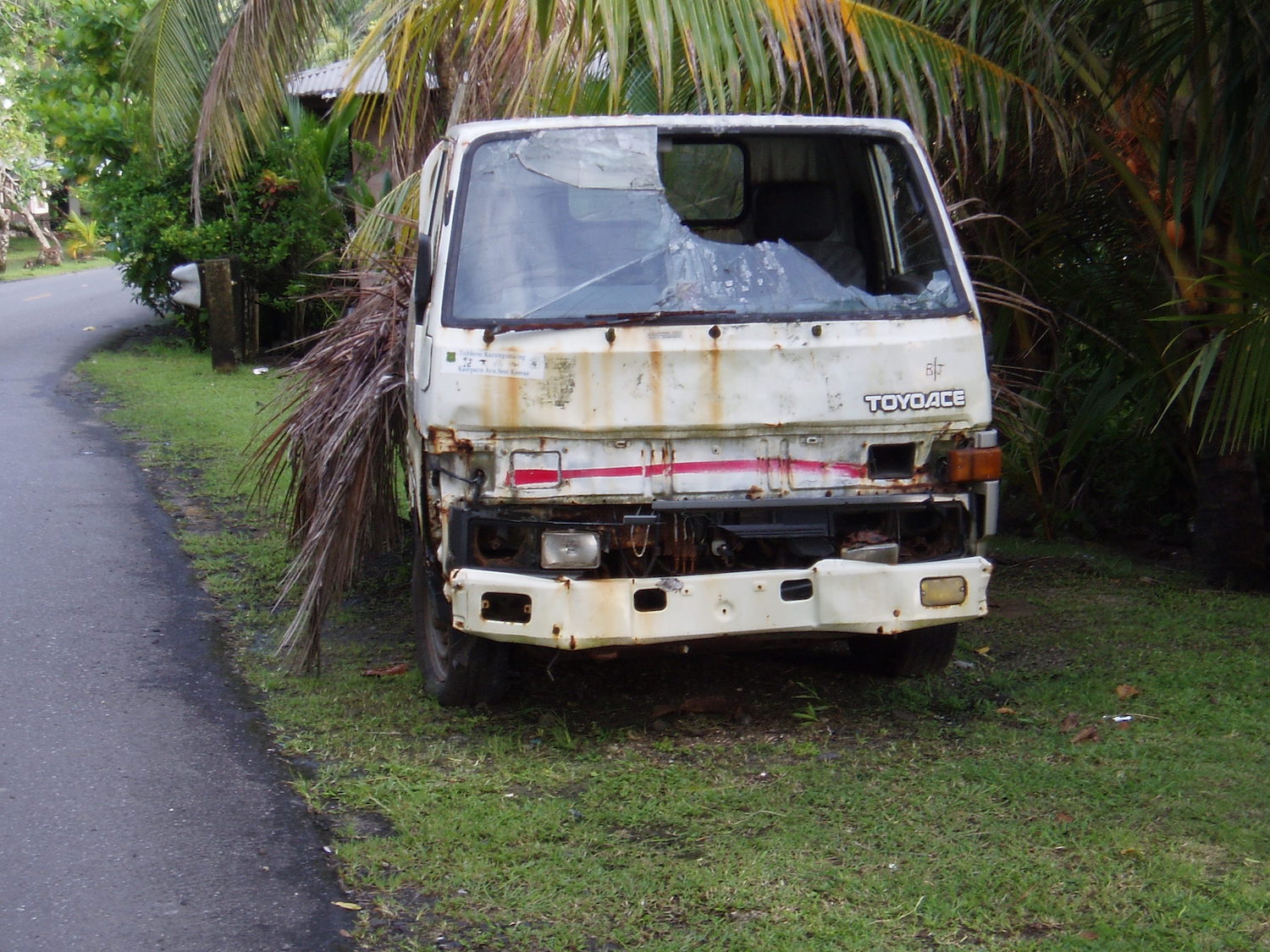
Just another day on the road in Kosrae, Micronesia
Many years ago, I was a passenger in a ’57 Chevy driven by a maniacal friend. The steering wheel came off in his hands while he was making a turn—and he laughed. Though it seemed unlikely then (particularly because I thought survival was dubious), that wheelessness was a benchmark for unusual driving experiences to come, many of which produced the same sensation of bewilderment, shock and terror. Filter in the unsettling elements of driving in a foreign country, and you have an uncharted laboratory for uncanny experiences behind the wheel.
I was glad we didn’t have a car for our two months in San Miguel de Allende, Mexico, because the narrow, serpentine roads that intersect at odd places seemed like open channels of carnage for the manic bustle of cars. Yet, San Miguel was an example of courtesy defying chance: drivers waited to pass, paused at blind intersections and moved slowly on. And in Bali, the morass of screaming motorbikes, some laden with bundles that small trucks wouldn’t take on (and add in two or more family members for the richest of loads) made me think corpses would litter the streets, yet the buzzing hive thrived, with no bloodletting I could see.
The bloodletting came elsewhere: Over the years I’ve enjoyed travel stretches in Micronesia, the Bahamas and Panama, and did a lot of driving in all. Driving in a foreign country exposes one to many unforeseen and often unnerving driving pleasures. Take Micronesia, for instance. Kosrae, the tiny island we lived on, had a single main road, which nearly circled the island on its dazzling coast. My girlfriend Alice and I were both teachers, and the small scooters we first bought to drive to work didn’t provide protection from the repeated sudden and gushing tropical storms that would muddy the road in an instant.
So we bought a car online, shipped by Japan by ferry. It was shocking enough to be able to buy a car in reasonably good shape that could be shipped from one far-off island to another, but much more surprising yet was that the steering wheel was on the right-hand side of the car. Though Micronesians do drive on the right, as I was accustomed to, having the steering wheel on the right as well contributed odd queasy sensations to my driving, particularly on the island’s curvy roads. My muscle memory wanted to steer in an incorrect direction from what lay in front of me. I could never get used to it.
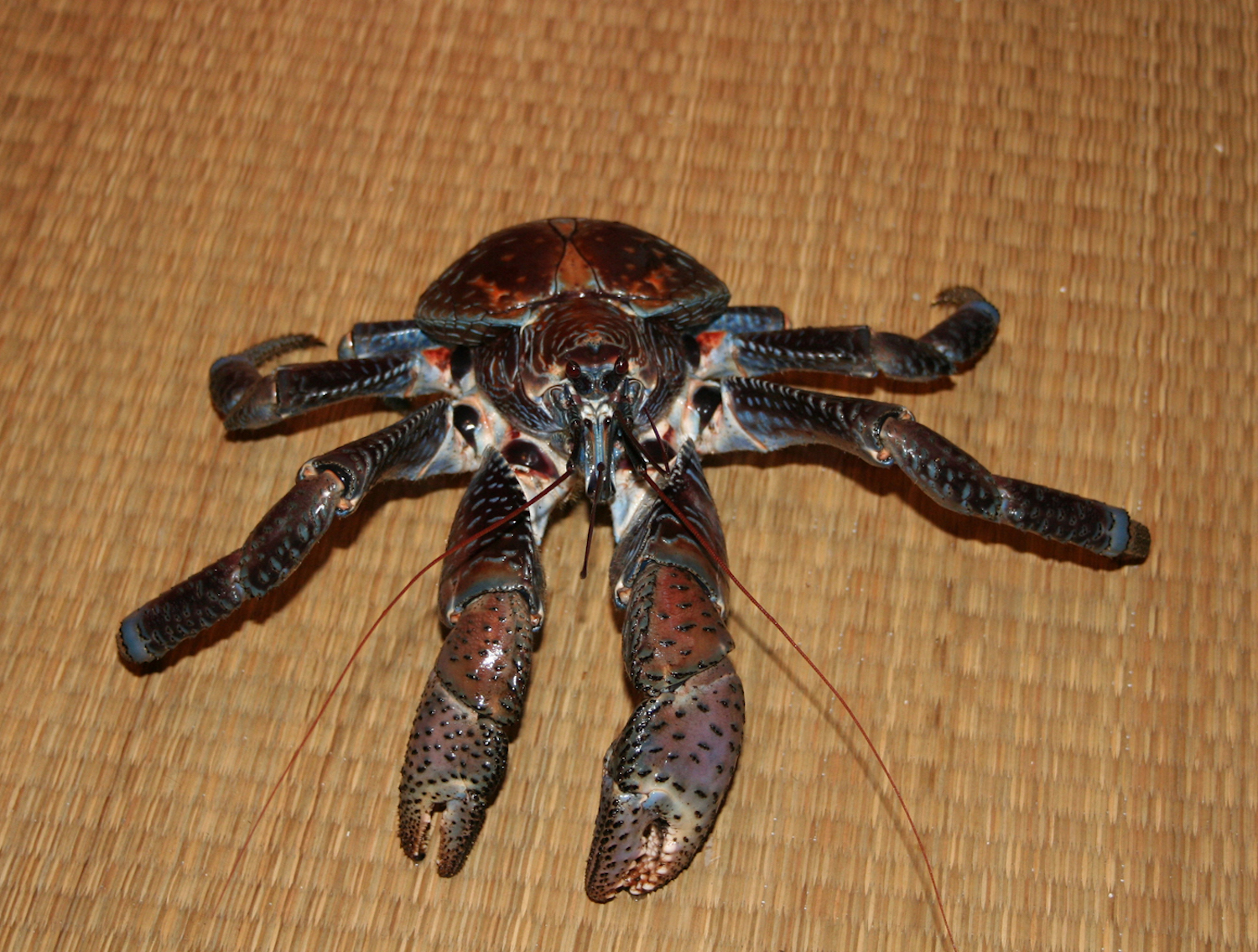
This crab might actually be able to slash your tires (juvenile coconut crab, Kosrae, Micronesia)
When Crabs and Cars Meet
I also couldn’t get used to getting in on the right-hand side of the car to drive: I was forever opening the left door and then slapping my head. But slapping my head was probably better than closing my eyes while driving, which I did several times on the periodic evenings when thousands of crabs—thousands!—would scuttle across the road at night, moving from the mangrove swamps to the sea.
Well, some of them would be moving. Many would be smashed by other island drivers, so that the roadways were a horrifying wash of bloodied hell the next morning, which made the following tropical downpour all the more desirable. When I drove home from some evening spot on a crab night, I’d try to swerve from the line of crabs in the road, who would often turn and raise their claws up at oncoming cars, fighters to the end. But it was impossible to avoid them, and closing my eyes didn’t close my ears to the horrible crunch.
But closing my eyes wouldn’t have helped anything in the Bahamas. Fortunate we were that our car had its wheel on the left. Less fortunate were we that the Bahamians drive on the opposite side of the road, so that when I’d pull onto the main highway, I’d see a car in the distance coming toward me on my side of the road and think, “What in blazes is that guy doing, driving on the wrong side of the road!” Of course, that was the same thing my opposing driver was thinking—and of the two of us, he was right.
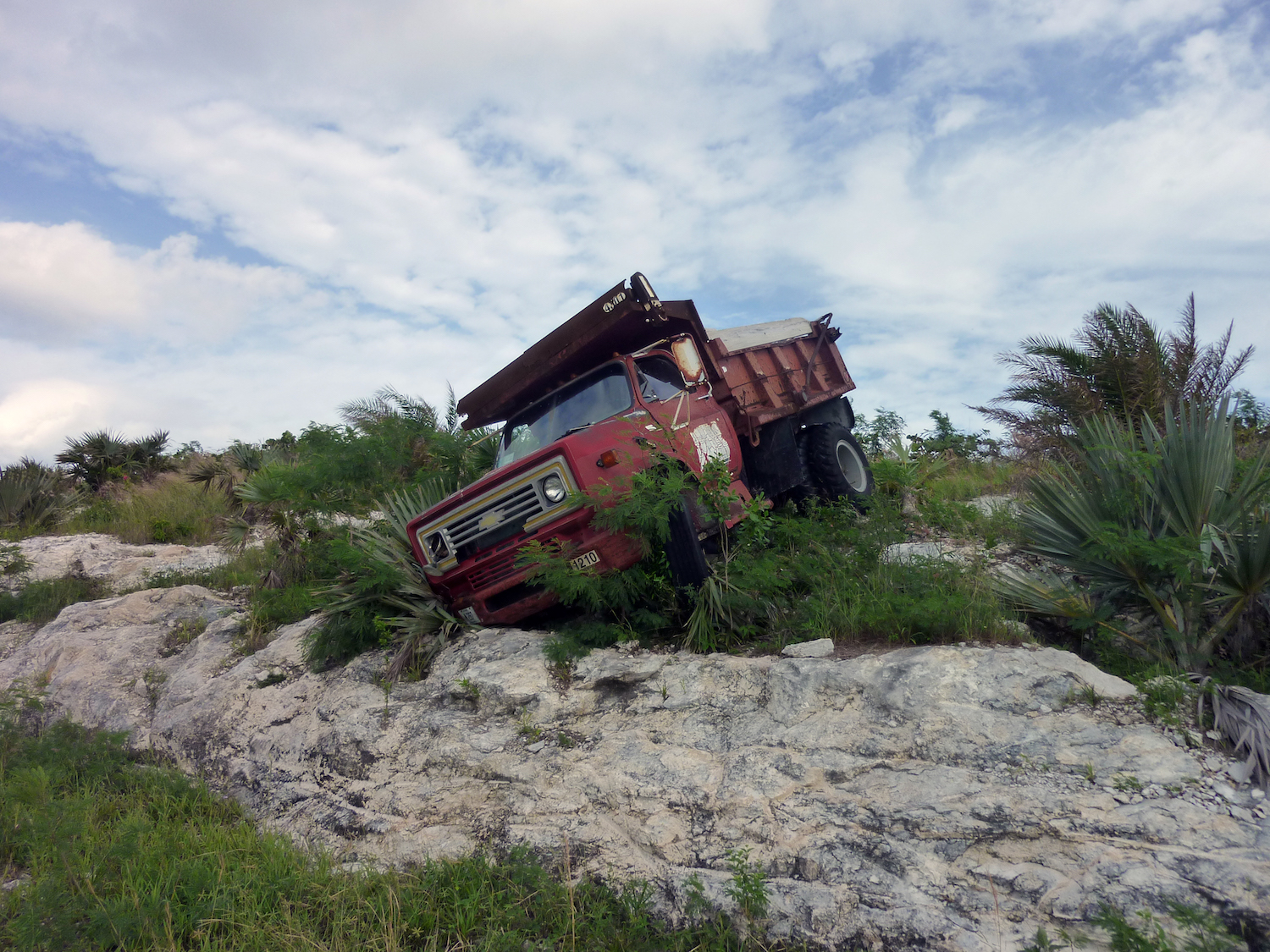
Not only are the roads dark, but a hurricane might do this to your truck overnight (Eleuthera, Bahamas)
Note to Facilities: Turn on the Lights!
Of course, that was when I was lucky enough to see the car in the distance. On Eleuthera, one of the Bahamas “out islands” where we stayed, there are long stretches of roadway without lighting. I was puzzled by how many businesses, including our favorite restaurant, had no lit signage on the roadside, so that we always passed by it at night and had to blearily backtrack. Backtracking was always interesting, since I’d frustratedly start out on the wrong side of the road, befuddled as well as blind.
It was of little help that our car was actually a giant airport van—10-seater—whose interior looked like it was purchased during WWII. It had survived the bombings, mostly, but its clattering suspension, bent frame, stuck windows, whispering air condition and bald tires made it the sad clown of the highway. And some of the narrow, enormously rutted off-highway roads to some outlier island attractions heartily laughed at our clown: we got it stuck on a muddy dirt half-road where we both left a gallon or two of sweat trying to dig it out in the sizzling Bahamian sun.
Had not a couple of Bahamians—who made ingenious use of coral slabs to both dig out the buried wheel and provide a under-tire grip to drive it out—strolled by to offer us laughing assistance, we’d be there yet.
I never felt safe in that van, but safety didn’t even seem a possibility driving on the streets of Panama City. Vast swathes of vehicles would converge into spaces that bicyclists might be fearful to squeeze, honking, inching forward, jockeying for position. The astonishing thing was that big trucks and passenger buses would leap forward into narrow canyons of cars, as though they were sleek sports cars. Driving around in that town always seemed the deepest leap of faith, though we always emerged unscathed.
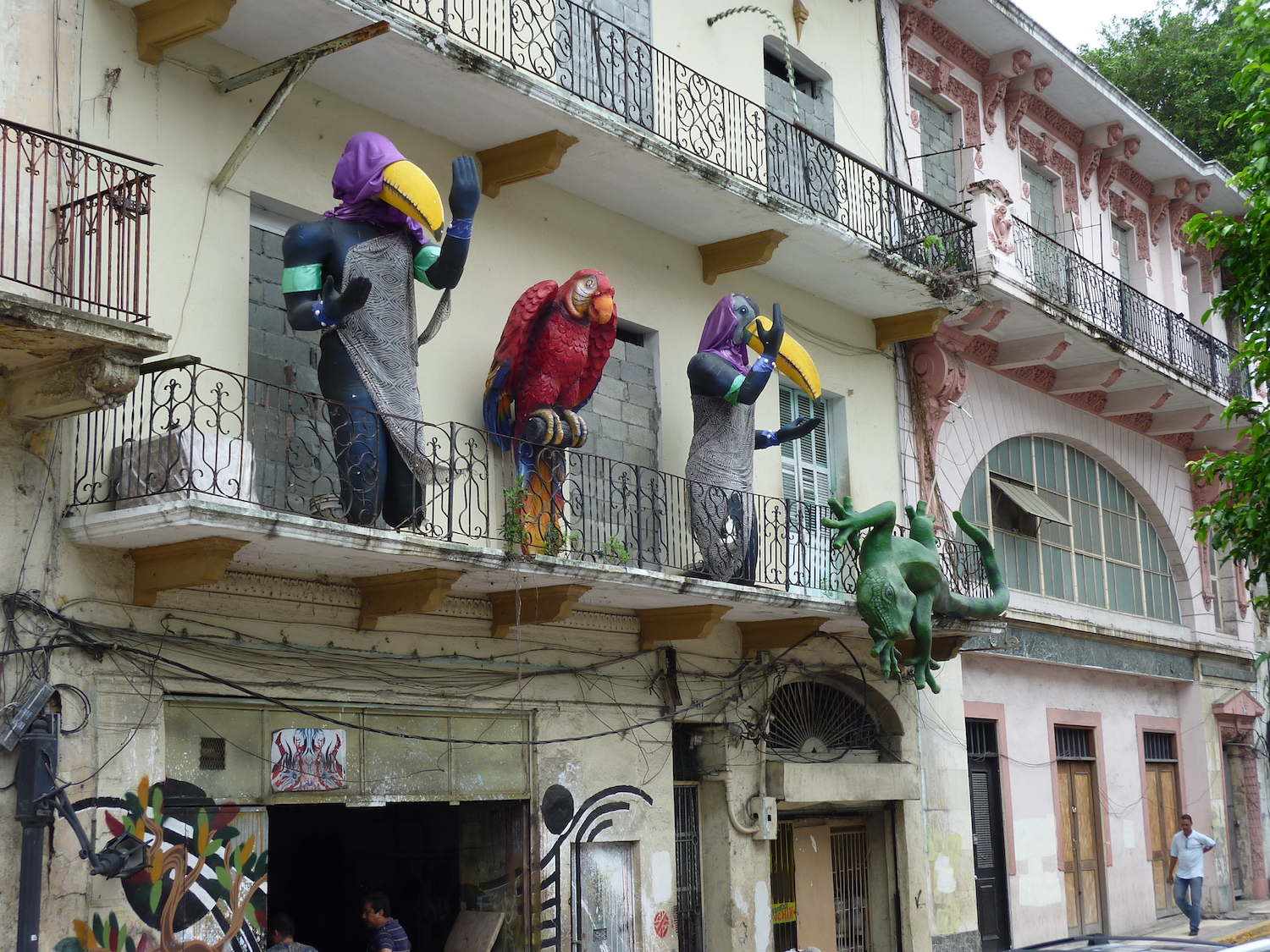
If you don’t tailgate or drive recklessly enough, you have to answer to these guys (Casca Viejo, Panama City, Panama)
If You Can Avoid It, Don’t Crash Your Host’s Car
That wasn’t the case in the Panamanian countryside. I was with Alice on a wide dirt road, driving the homeowner’s old SUV from our house-sit, going to the shore to buy fish from local fishermen. Coming in the opposite direction was a large commercial truck, moving directly down the center of the road. I kept expecting him to swing over as we approached, but we moved closer and closer and he kept barreling on. I finally swerved hard to the right, into some tall grasses off the road, thinking that would be safe, though annoying.
Safe, no. The grasses concealed a concrete drainage abutment. When I hit it, it sounded like a small bomb went off—it stopped the car dead. The truck continued on its merry way and we exited to see the right front wheel tilted out at a crazy angle, tire popped. Again, sweating in long rivulets, we changed the tire, only to drive the car forward a few feet and have it collapse entirely, because the suspension was destroyed.
The cops that stopped to see what was going on tried to talk to us, but my nonexistent (and Alice’s rudimentary) Spanish only seemed to amuse them, and they drove off. We had to have the car towed back to the property, and explaining it by email to the traveling householders wasn’t my finest moment.
But, everybody lived. And I eagerly look forward to driving in other foreign lands to come. As long as I’m in the passenger seat, carrying an extra steering wheel, just in case.
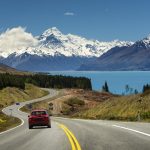
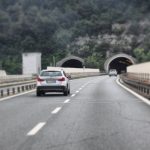



Leave a Reply